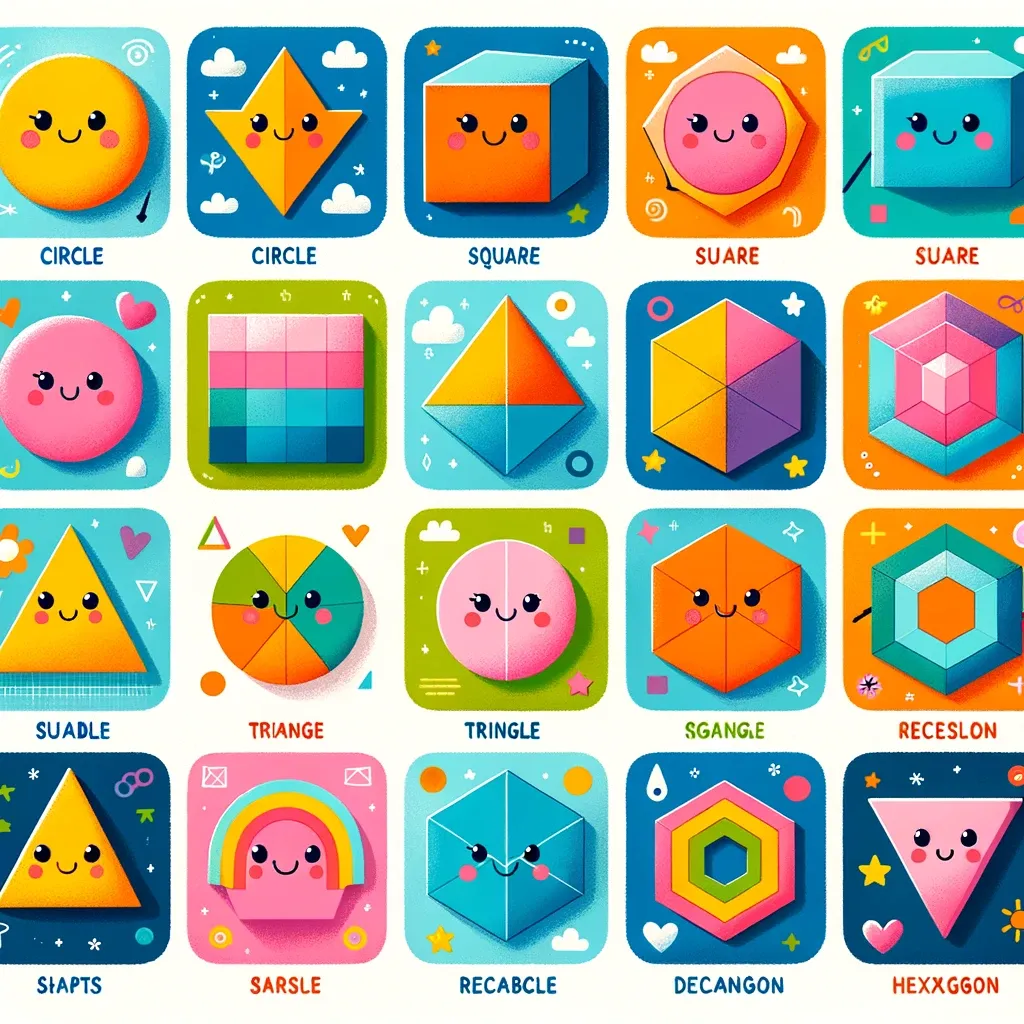Have you ever had a moment where you asked an AI to do something, and the results were hilariously off the mark? Well, gather around, because I have a story that’ll make you chuckle and think.
A while back, I decided to test DALL-E 3, an AI tool known for generating images based on text prompts. My mission? To create a colorful guide for children showcasing basic geometric shapes. Sounds simple enough, right? Spoiler: The results were a delightful train wreck.
Initially, I shared what I thought was one of the better images from DALL-E 3’s attempts. The shapes were mostly right, and only a couple of labels were wildly incorrect. “Okay,” I thought, “maybe the next one will nail it.” Oh, how wrong I was.
Here’s another generated image from the same prompt.

So, what went wrong?
For starters, the grid starts off promisingly with a correctly labeled circle. But then, things take a nosedive. A cube proudly wears the label “square,” a winged diamond is dubbed “circle,” and my favorite—a yellow triangle—is named “shapts.” Yes, “shapts.”
One hexagon was labeled “recabcle” and another “decangon.” What’s a “decangon”? Perhaps it’s some new futuristic shape only AIs know about. Last but not least, a rainbow-hatted possible pentagon got christened as “sarsle.” I don’t even want to imagine explaining that to a child!
Lessons in AI Limitations
This experience underscores a critical point: while AI technology has come leaps and bounds, it’s far from perfect. The mix-ups in labeling showed me that even advanced AI models like DALL-E 3 can still stumble on seemingly simple tasks.
Why does this happen?
Well, AI models learn from vast datasets, and their responses are guided by probabilities rather than definitive understanding. When asked to generate images of shapes, the AI might mix things up if the data it’s been trained on isn’t crystal clear. Moreover, text generation components can sometimes fumble with spelling and context, leading to amusing outputs like “decangon.”
A Call for Better Training
This brings us to the importance of continually improving AI models. If we expect AIs to assist in educational tools or content creation, it’s crucial that they understand basic concepts reliably. This involves refining the datasets they learn from and ensuring the AI can contextualize requests more adeptly.
The Upside
Despite the giggles, there’s a silver lining. These errors make us acutely aware of the current limitations and give us a clear direction for future improvements. And honestly, they add a bit of humanity to our robot friends. Who hasn’t had a moment where they confidently called something by the wrong name?
So, the next time you use an AI tool and it goofs up, remember: each hilarious mistake is a step towards making these systems better. And until we reach perfection, let’s enjoy the laughs and the wonderful weirdness of AI.
What are some of the funniest AI blunders you’ve encountered? Drop a comment below!
